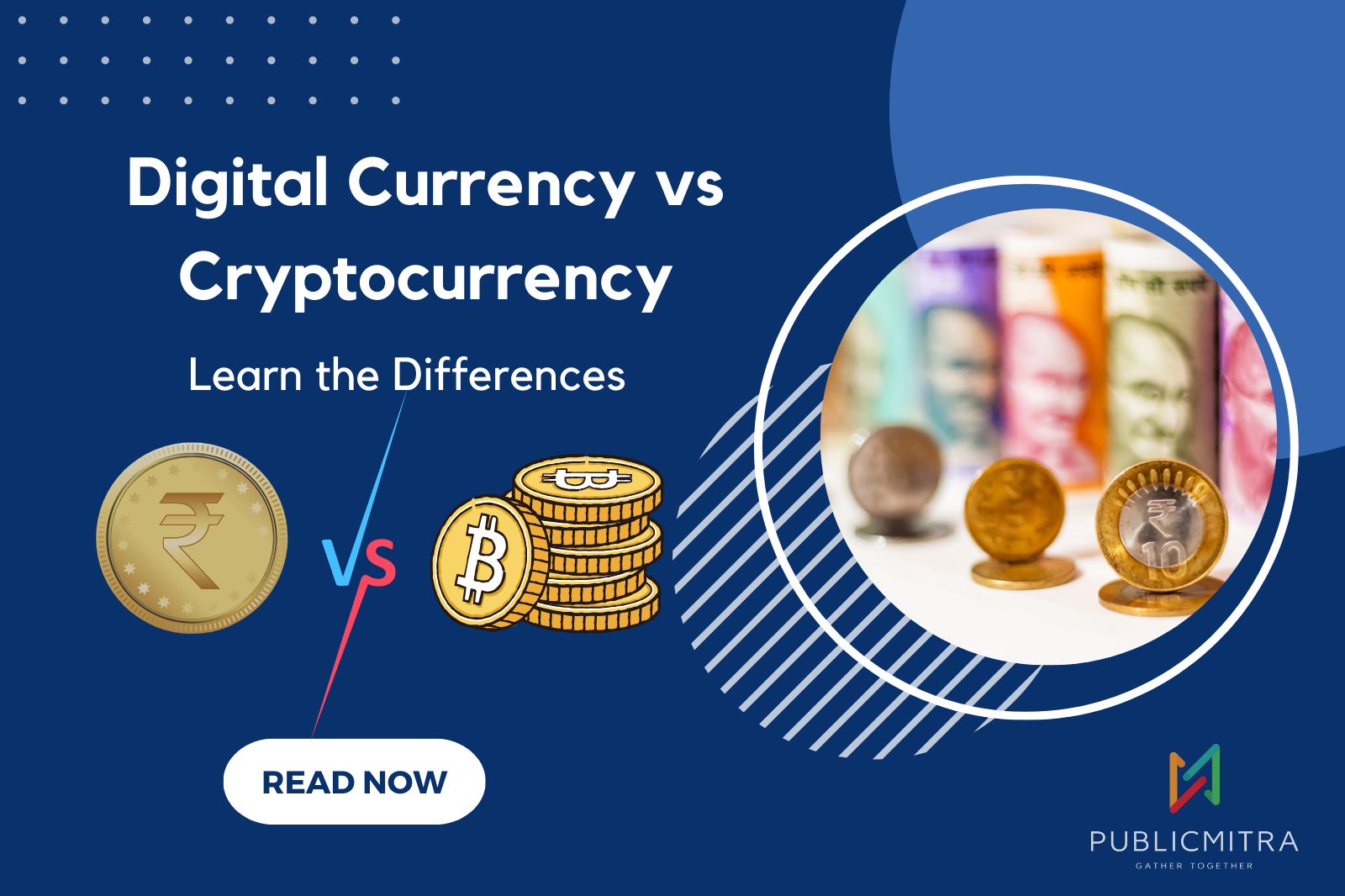What is the Differentiation Between Digital Currency and Cryptocurrency?
The Reserve Bank of India is preparing to launch its central bank digital currency (CBDC), legally recognised as the digital rupee. It will be interchangeable with traditional money, usable for payments, and secure for storing value. Referred to as the e or digital rupee, RBI’s CBDC provides an alternative for transactions, akin to physical banknotes but in digital form.
What is Digital currency?
Digital currencies are entirely electronic forms of money prevalent in many nations’ financial systems. They exist solely within computer networks and are exchanged virtually. The main types include cryptocurrency, central bank digital currencies (CBDCs), and stablecoins. Cryptocurrency relies on blockchain, the common distributed ledger for digital currencies. With over 21,000 options, according to CoinMarketCap, cryptocurrencies are widespread. Digital Currency represents fiat currency in digital form, akin to physical money in your wallet or withdrawn from ATMs. Backed by authorities like the Reserve Bank of India, it can convert into real currency upon launch, as planned for 2023.
What is Cryptocurrency?
Cryptocurrency, a digital currency employing cryptography for secure transactions and unit control, operates via decentralized technology like the blockchain. It facilitates direct peer-to-peer transactions, creating a global financial system without intermediaries. To engage in crypto trading, users require a funded bank account, with online exchanges facilitating currency conversion for the corresponding cryptocurrency. While digital currencies are regulated by central authorities like India’s RBI, cryptocurrencies remain decentralized, with all transactions logged on a widely accessible decentralized ledger. Digital currencies exhibit stability and broad acceptance, enabling easier transaction management. Conversely, cryptocurrencies are known for their volatile nature, with rates experiencing frequent fluctuations.
Differences Between Digital Currency and Cryptocurrencies
The Reserve Bank of India (RBI) defines Central Bank Digital Currency (CBDC) as a digital form of legal tender issued by a central bank, equivalent in value to fiat currency but with a distinct format. While CBDC shares similarities with cryptocurrencies, there are crucial differences between the two.
Digital Currency:
- takes electronic form, representing traditional fiat currency.
- Central banks or governing authorities issue and oversee digital currency.
- operates within a centralized framework, subject to regulation.
- Adheres to established monetary and legal systems
- Includes digital renditions of paper currency like the digital rupee.
- Usable for various transactions, such as digital wallets and electronic transfers
Cryptocurrencies:
- Exist as decentralized digital assets.
- relies on blockchain technology for operation.
- Lacks a central issuer; functions through peer-to-peer networks.
- Often viewed as investments or speculative assets,
- Prone to significant price volatility
- Prominent examples encompass Bitcoin, Ethereum, and other altcoins.
- Employed for diverse purposes, including investment, remittances, and decentralized applications (dApps)
While CBDC, like the digital rupee, shares traits with both digital currency and cryptocurrencies, it stands apart as a regulated legal tender with a centralized governing authority, aiming to provide a digital equivalent of traditional paper currency.
Conclusion
Utilizing digital assets and cryptocurrencies offers notable advantages. Digital currency streamlines transactions through electronic means, enhancing convenience and accessibility. Cryptocurrency, operating on decentralized blockchain technology, promotes borderless and secure transactions, reducing intermediaries. Both facilitate financial inclusion, especially in regions with limited banking access. While digital currency aligns with traditional monetary systems, cryptocurrency offers potential for investment and innovation, paving the way for new financial applications.












